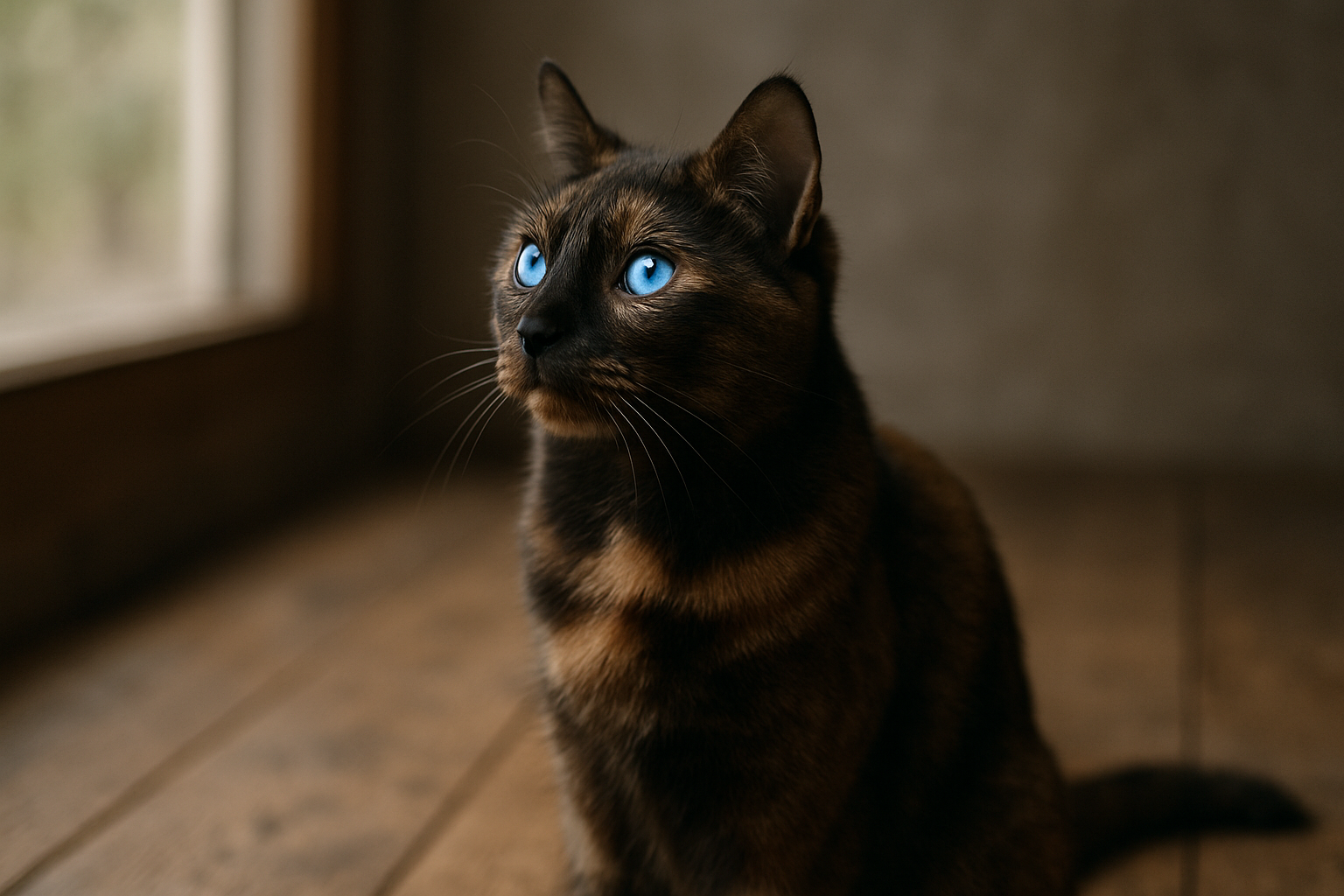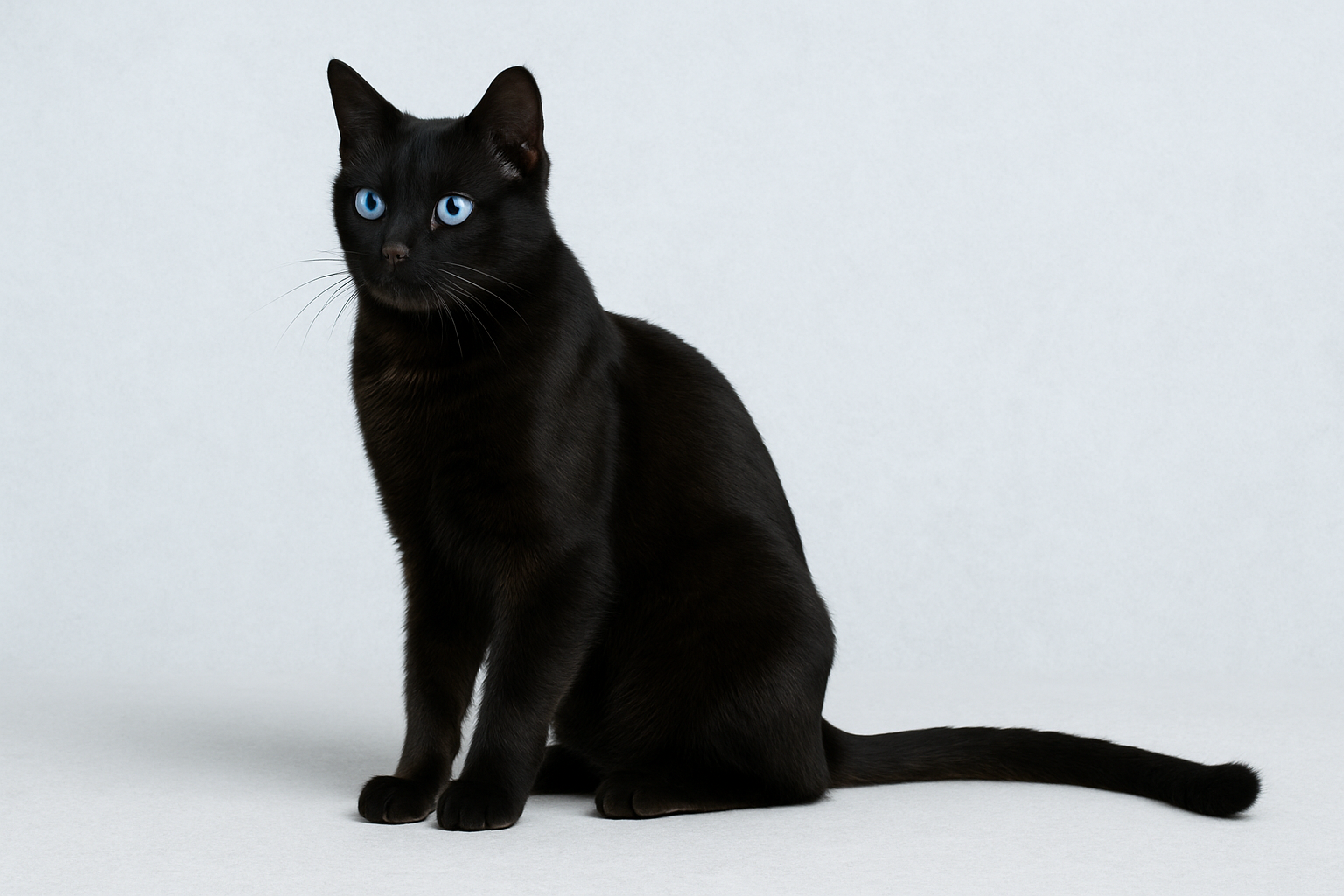The Ojos Azules cat is one of the most intriguing felines ever documented — not just for its piercing sapphire eyes, but for its rarity and mysterious disappearance. With a name that means “blue eyes” in Spanish, this experimental breed appeared briefly in the 1980s before vanishing from the public eye. You won’t find one available for adoption today — but the Ojos Azules still fascinates breeders and cat lovers as a genetic and historical marvel.
Quick Breed Facts
- Origin: New Mexico, United States
- Breed registries: TICA (experimental status only)
- Weight range: 6–12 pounds
- Lifespan: Unknown; limited data available
- Coat: Short to medium, soft texture
- Colors and patterns: All colors; white spotting common
- Eye color: Striking deep blue (regardless of coat color)
- Grooming: Low maintenance
- Activity level: Moderate
- Affection level: High
- Availability: Extinct (not available for adoption)
History & Origin
The Ojos Azules first appeared in New Mexico during the early 1980s, beginning with a feral blue-eyed cat named Cornflower. What made Cornflower so remarkable was that her kittens inherited the same vivid eye color despite having dark-colored coats — something almost unheard of in feline genetics. Typically, deep blue eyes are linked to colorpointed or white-coated breeds, but this was different.
Geneticists and breeders started studying this unusual blue‑eye trait and eventually named the cats “Ojos Azules.” They bred them carefully, pairing blue‑eyed cats with non‑carriers after some kittens showed health problems like cranial deformities or stillbirths. By the late ’90s, interest had faded and the breed quietly slipped out of breeding programs and registry chatter.
Appearance & Distinctive Traits
The Ojos Azules was best known for its intense, deep-blue eyes — a color that stood out dramatically against even the darkest coat colors, including black, tortoiseshell, and tabby. This feature alone made it one of the most visually arresting rare cat breeds ever recorded. The blue eye trait was caused by a dominant gene that functioned differently from the genes found in breeds like the Siamese or Ragdoll.
Physically, Ojos Azules cats had a medium build with a slightly rounded head, wedge-shaped face, and soft, silky coats. Many had white markings on the feet or tail tip due to the way the blue-eye gene interacted with coat pigmentation. They resembled Domestic Shorthairs in many ways but were genetically unique.

Personality & Temperament
Despite limited documentation, early breeders noted that the Ojos Azules had a sweet, affectionate temperament. These cats were friendly, people-oriented, and reportedly quite intelligent. They enjoyed companionship but weren’t overly demanding. Their calm demeanor and moderate activity level suggested they would have made excellent house cats if the breed had continued to develop.
There were no reports of behavioral issues, and they were believed to get along well with other animals and children. However, because the breed never reached widespread development, much of this is based on a small sample size and anecdotal breeder observations.
Genetic Background & Health Challenges
Geneticists believe the trait is dominant. However, breeding two carriers often resulted in kittens with curled tails, deformities, or stillbirths. That raised serious concerns and eventually brought the breeding to a stop.
Breeders attempted to avoid these issues by mating blue-eyed cats with non-carriers, but the small gene pool made responsible breeding difficult. Combined with limited demand and registry support, the breed faded out, and no known active breeding programs remain today.
The Legacy of the Ojos Azules
While the Ojos Azules may never return, it remains one of the most fascinating case studies in cat genetics. This breed challenged everything we thought we knew about feline eye color — especially its ability to produce vivid blue eyes in dark-coated cats. Even today, scientists point to the Ojos Azules when exploring rare eye color genes in cats.
If you love the look of blue-eyed cats, consider breeds like the Balinese, Siamese, or Himalayan, which are more readily available and offer similarly striking features. But the Ojos Azules will always hold a special place in the world of rare and extinct cat breeds.
Frequently Asked Questions
Is the Ojos Azules cat extinct?
Yes. There are no known active breeding programs for the Ojos Azules, and no verified sightings in recent decades. It is considered extinct or discontinued.
Can black cats have blue eyes?
Normally no, but the Ojos Azules was a rare exception. Their blue eye gene allowed for sapphire eyes even in black or tortoiseshell cats.
How much did Ojos Azules cats cost?
There is no current pricing because the breed is unavailable. During its brief experimental phase, they were rarely sold and usually kept within breeding programs.
Was the Ojos Azules ever officially recognized?
The breed held “experimental” status with TICA but was never granted full championship recognition due to its health complications and rarity.
Are there other cats like the Ojos Azules?
While no other breed carries the same gene, blue-eyed cats like the Siamese, Birman, and Ragdoll share similar visual appeal, though their blue eyes are genetically different.





